1. Can gene expression be controlled at many levels?
2. Which level of control is most important during development?
Gene expression can be controlled at many levels, but control of transcription is at the heart of development.
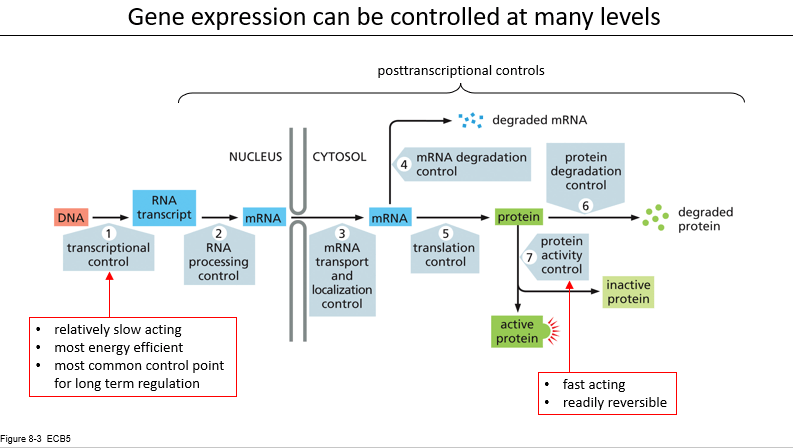
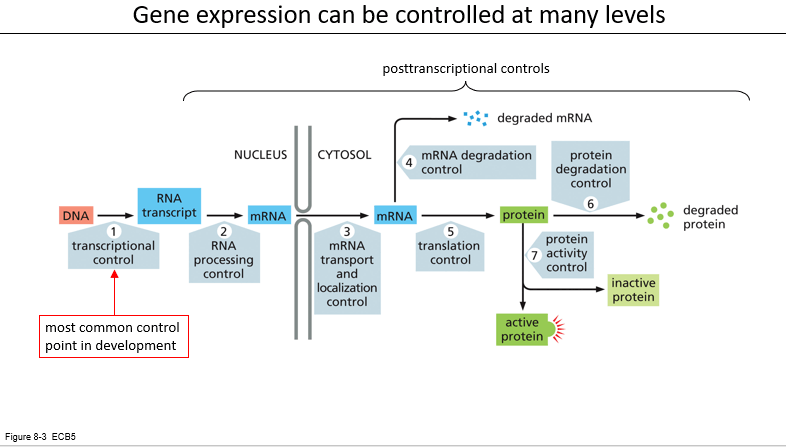
1. Can you explain each of the cases in the following diagram? Please do not forget to mention to allolactose in addition to everything in the diagram. Also mention the fluctuating levels of allolactose and cyclic AMP.
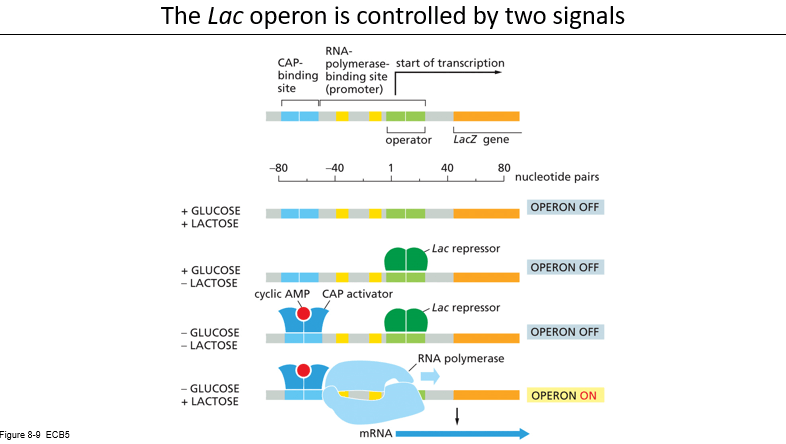
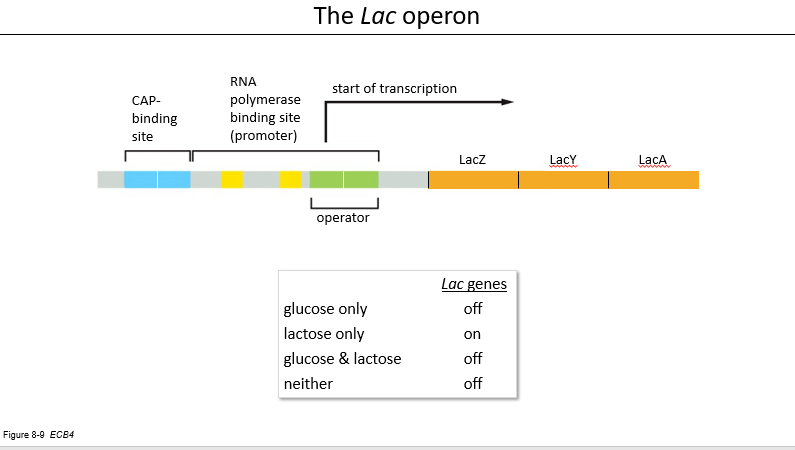
How many RNA polymerases are in eukaryotes? Which one will we focus on in this course? What does it transcribe?
Eukaryotes contain three RNA polymerases. RNA polymerase II transcribes all mRNAs.

1) What does looping of the DNA allow transcriptional activators to do?
2) What is the role of the mediator during this looping? What is a mediator?
Looping of the DNA allows transcriptional activators to interact with the RNA pol II transcriptional machinery over long distances. This interaction is bridged by the Mediator, a 24-subunit protein complex that serves as a link between transcription activators and the RNA pol II transcriptional machinery.
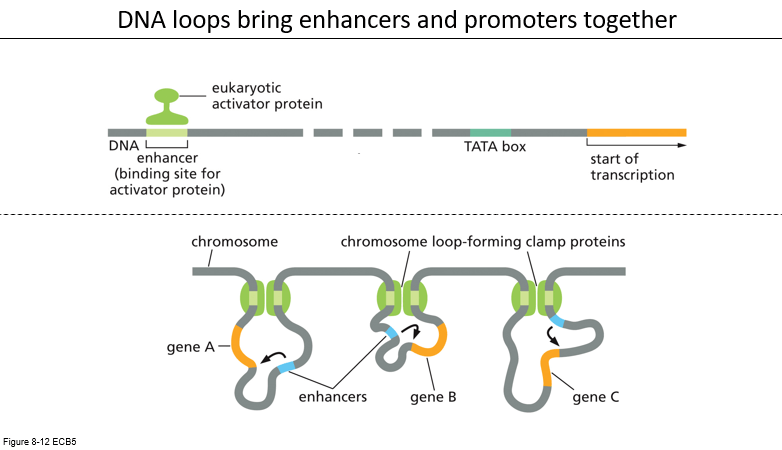
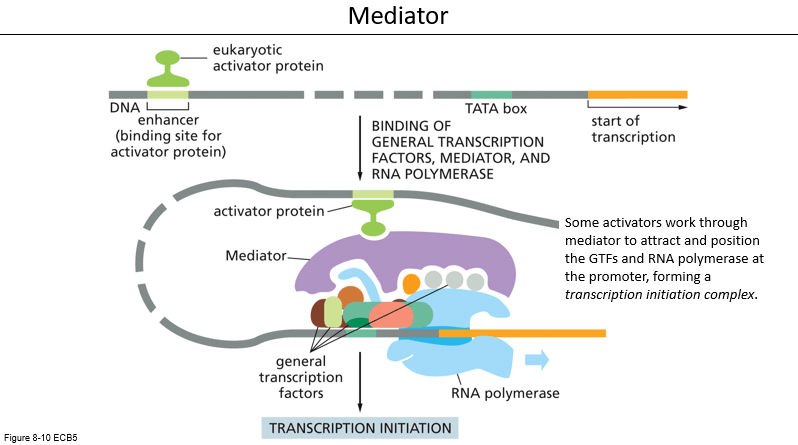
1. What do prokaryotic genes have immediately upstream of its transcriptional start site? What exactly is the promoter site?
2. What binds to it?
3. How does transcription know when to stop (what is the name of the site it stops at)?
[we are currently talking about prokaryotes]
A prokaryotic gene has a region of DNA adjacent immediately upstream of its transcriptional start site called the promoter where RNA polymerase binds. Transcription stops at a site called a terminator.
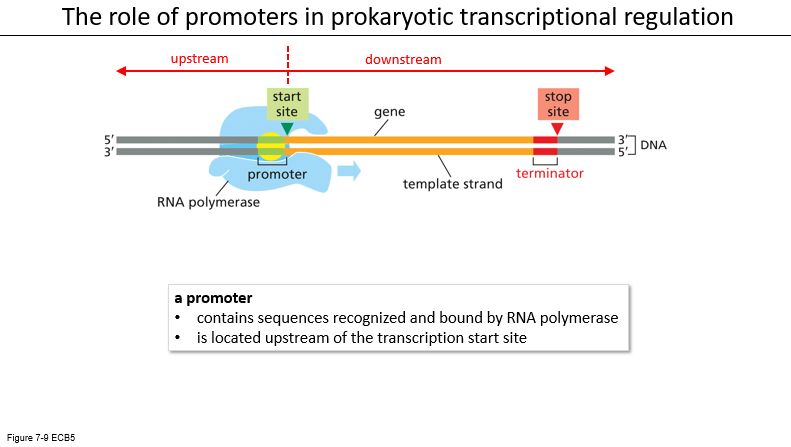
1. What are transcription regulators? What do they do in prokaryotes and eukaryotes? Can you name one prokaryote transcription regulator we have seen?
2. What kind of bond is involved? Do transcription regulators hydrogen bond to nucleotide bases?
3. In which groove (major or minor)of the DNA does this bonding take place?
Transcription regulators in prokaryotes and eukaryotes bind specific sequences of DNA by hydrogen bonding to nucleotide bases (primarily within the major groove of DNA).
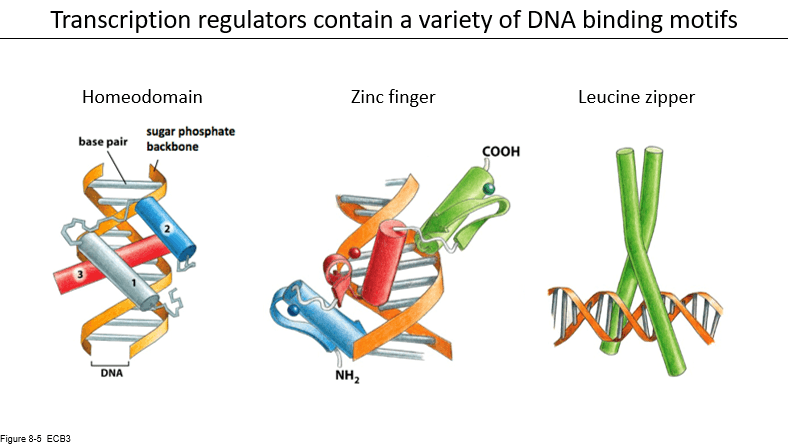
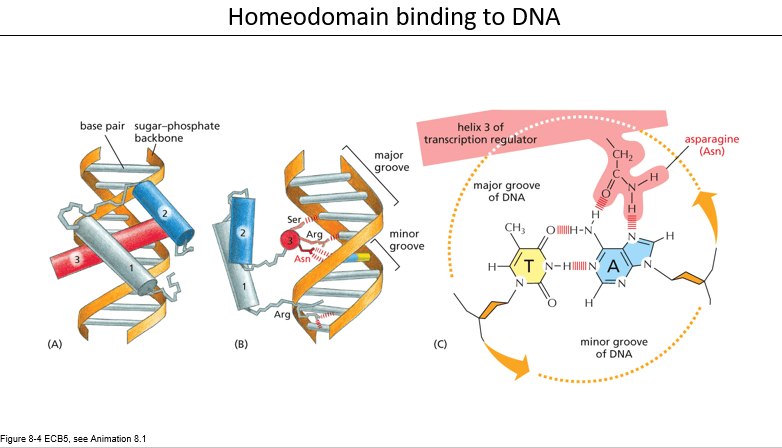
1. Does RNA polymerase II directly bind to the promoter region? If not, does the promoter contain a special sequence that other things which help the RNA polymerase indirectly bind to the promoter?
2. What is the special sequence called?
3. What are the things called that help the RNA polymerase indirectly bind?
4. What is the name of the first thing that binds to the promoter and recruits other things to bind? Which part of this first thing helps the thing bind?
RNA polymerase II doesn’t bind directly to the promoter region. Instead, the promoter contains sequences (most commonly, the TATA box) that bind the general transcription factor TFIID. TFIID contains the TATA binding protein called TBP. The binding of TFIID recruits other general transcription factors and RNA polymerase II
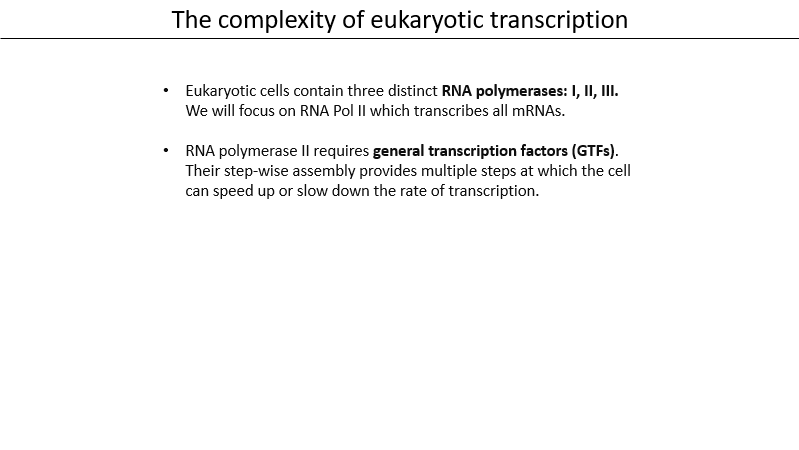
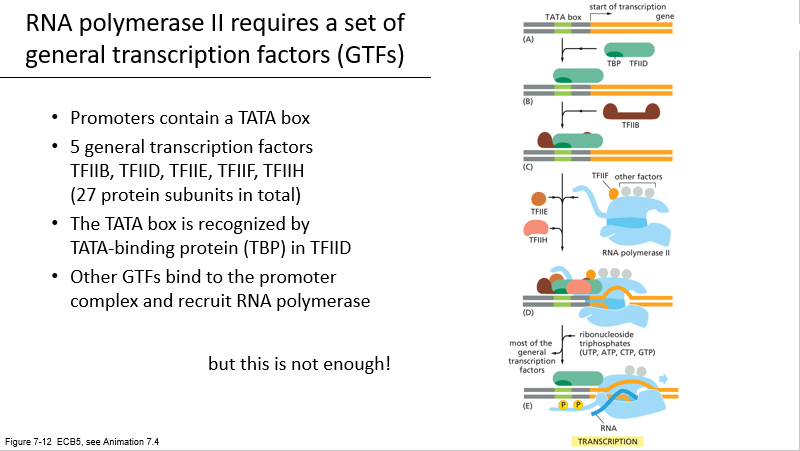
What is a good example for understanding the function of an enhancer (esp. As it pertain to the development of the vertebrate body plan)?
The limb enhancer of Shh (sonic hedgehog) provides a good example for the understanding enhancer function in regulating gene expression, as well as the role of enhancers in the evolution of the vertebrate body plan. Remember that the Shh gene is responsible for making the Shh morphogen. Mutations in the enhancer for the Shh gene will cause either more digits (limbs) or less/none. The effect of the enhancer mutation is based on the type of mutation.
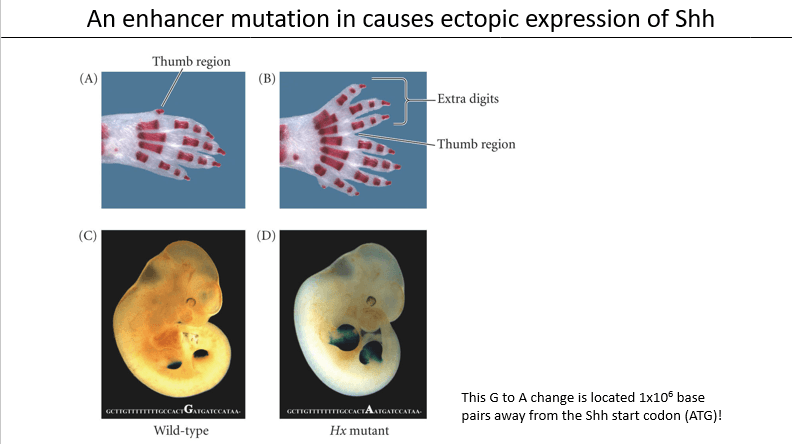
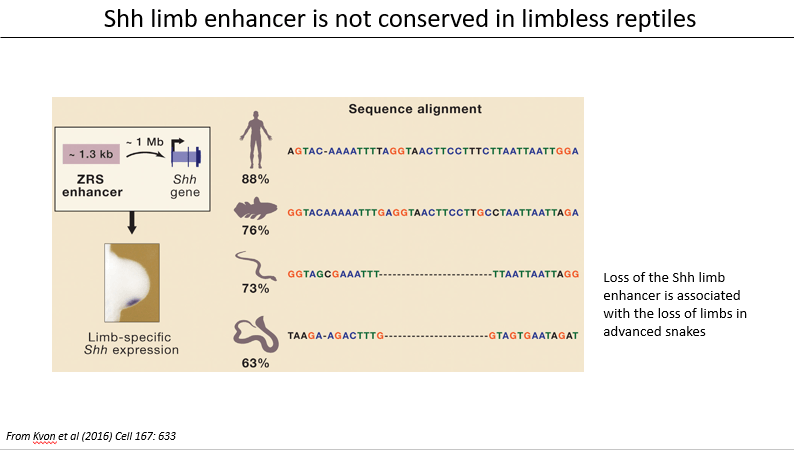
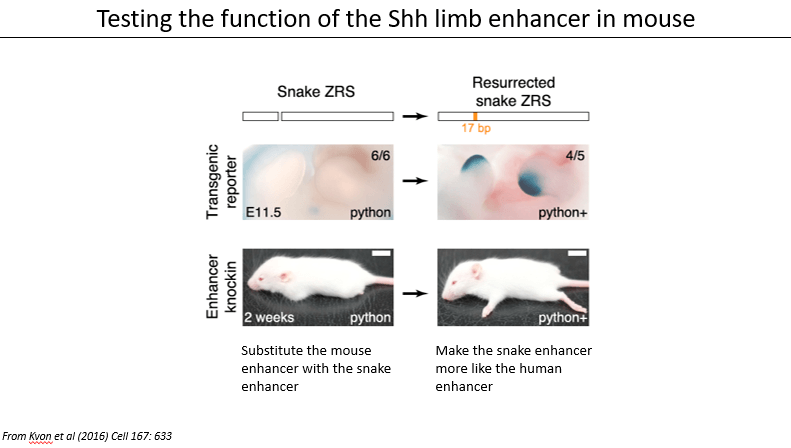
1. What two types of things regulate promoter transcription?
2. Can you describe each thing and how they affect the promoter?
[we are currently talking about prokaryotes]
Promoter transcription is regulated by repressors and activators. Repressors function by blocking the binding of RNA polymerase to the promoter. Activators function by facilitating the binding of RNA polymerase to the promoter.
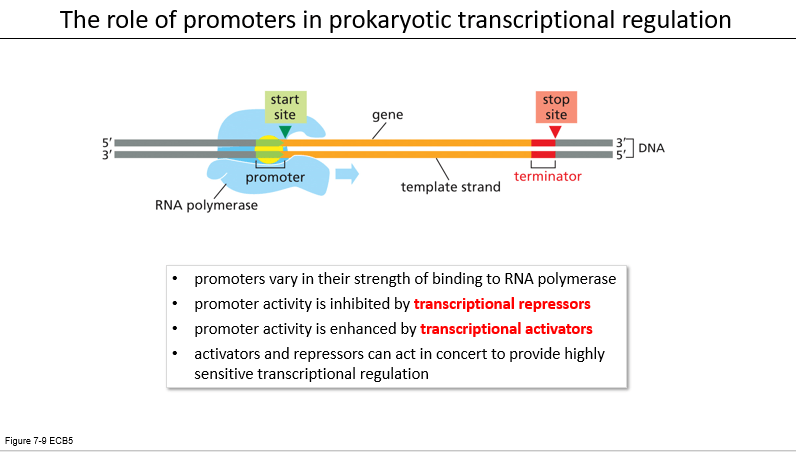
Can the DNA binding domains of transcriptional regulators be of multiple different types?
What are the three types mentioned in lecture? Which two do you think will come up again?
Can different types of DNA binding proteins (AKA different transcriptional regulators bind to different DNA sequences? Does this allow for specificity?
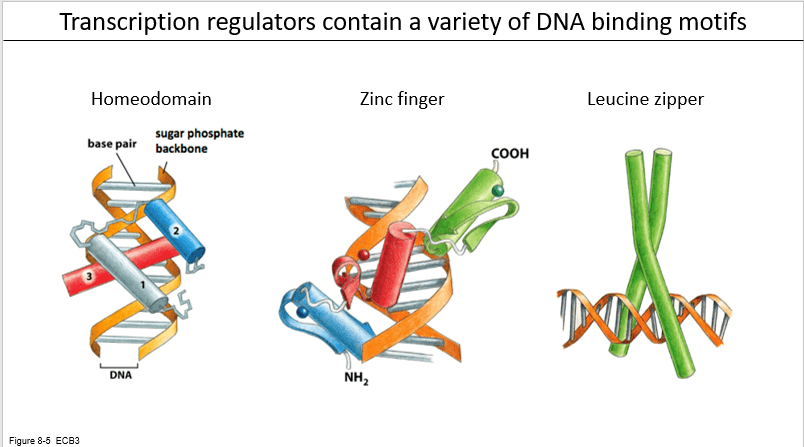
1. Is the complex of RNA polymerase with the general transcription factors sufficient to activate transcription?
2. If not, what else is needed to activate transcription, and for what reason during development?
3. Do prokaryotes have general transcription factors?
The complex of RNA polymerase with the general transcription factors, however, is not sufficient to activate transcription. Specific transcriptional regulators are also required to allow cell type or developmental stage specific gene expression. Prokaryotes do not have general transcription factors
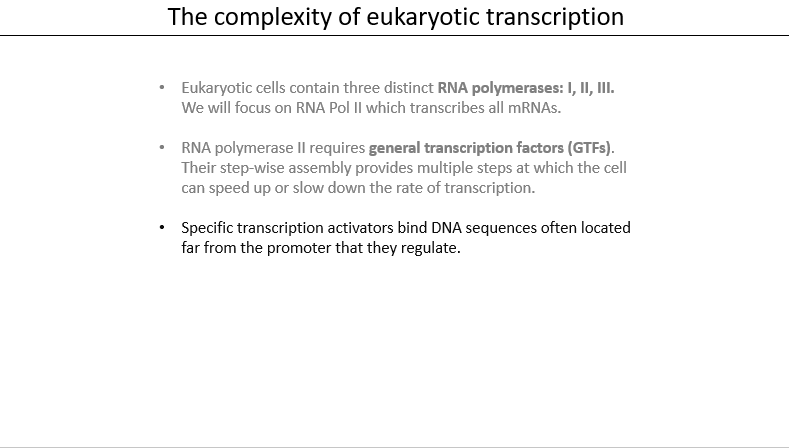
Are eukaryotic genes commonly controlled by many different regulatory proteins? Does this ensure precise gene expression?
What is a committee?
Eukaryotic genes are commonly controlled by many (sometimes hundreds) of different regulatory proteins ensure precise regulation of gene expression.
A committee is referring to the complex of various enhancers and their elements affecting the promoter through the mediator.

1. Can a repressor and activator work together to regulate an operon? If so, can you name an example?
2. What does the lac repressor do and what type of regulator is it?
3. What does the CAP activator do and what type of repressor is it?
4. Under which condition is the lac operon expressed?
[we are currently talking about prokaryotes]
A repressor and an activator combine to regulate the Lac operon in response to carbon source availability. The Lac repressor senses the availability of lactose and represses expression of the Lac operon when lactose is absent. The CAP activator senses the availability of glucose and activates expression of the Lac operon when glucose is absent. Thus, the Lac operon is expressed only when lactose is available, and glucose is not.
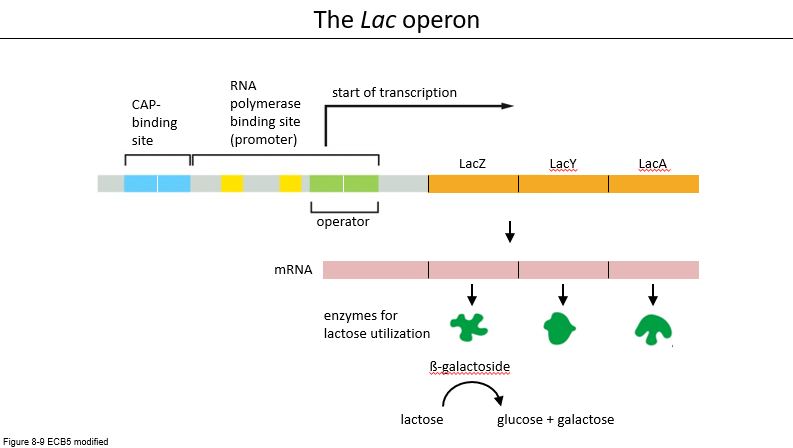

1. Is transcription regulation more complex in eukaryotes or prokaryotes?
Transcription regulation in eukaryotes is considerably more complex than in prokaryotes.
1) What do transcription regulators bind to? Can you describe the thing they bind to (what is its purpose)? Can you connect this thing to the different DNA binding domains?
2) Can you describe how far this thing is from the promoter?
3) Can it be upstream or downstream or both of the gene they regulate?
Transcription regulators bind to DNA sequences called enhancers. Enhancers can be quite far from the start site of transcription and be upstream or downstream of the eukaroytic gene they bind to.
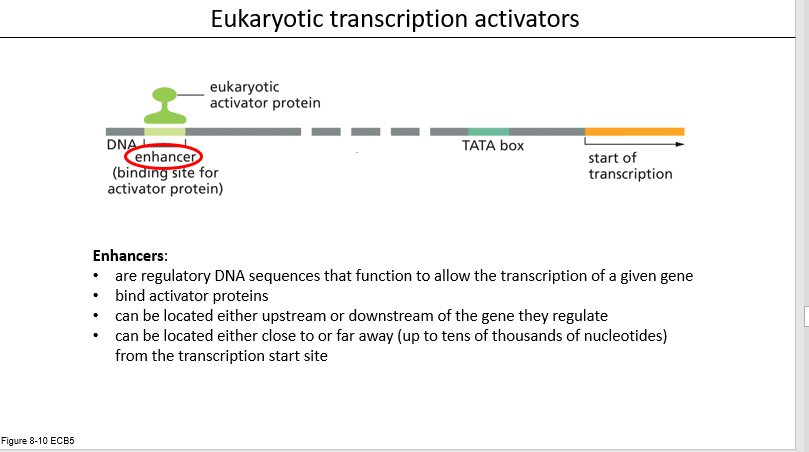
Summary Question (knowing the answer to these will help you orient yourself well with this material)
1) What is a transcription regulator? What are the two types of transcriptional regulators? Do eukaryotes and prokaryotes have them?
2) What is a general transcription factor? Do eukaryotes and prokaryotes have them?
3) What are enhancers? Do eukaryotes and prokaryotes have them?
4) What are promoters? Do eukaryotes and prokaryotes have them?
Explain verbally.